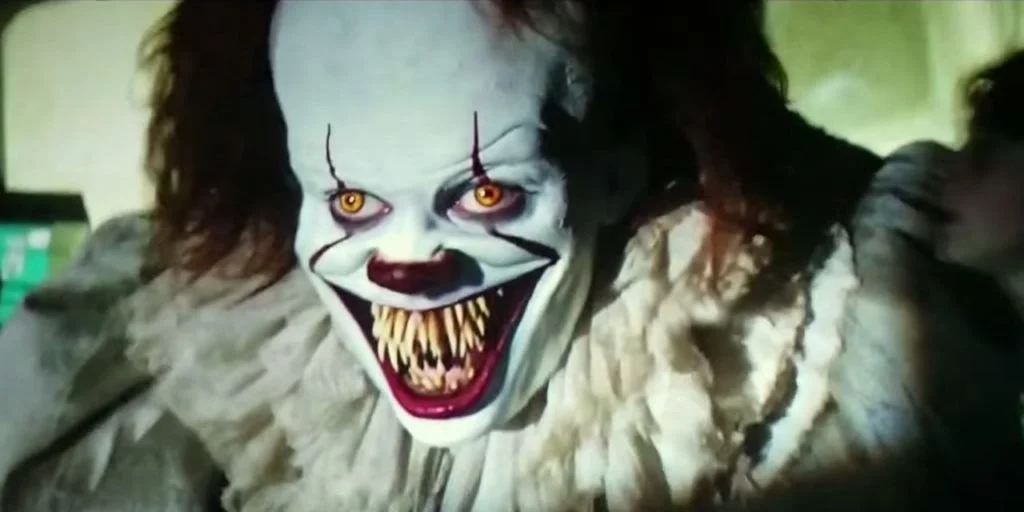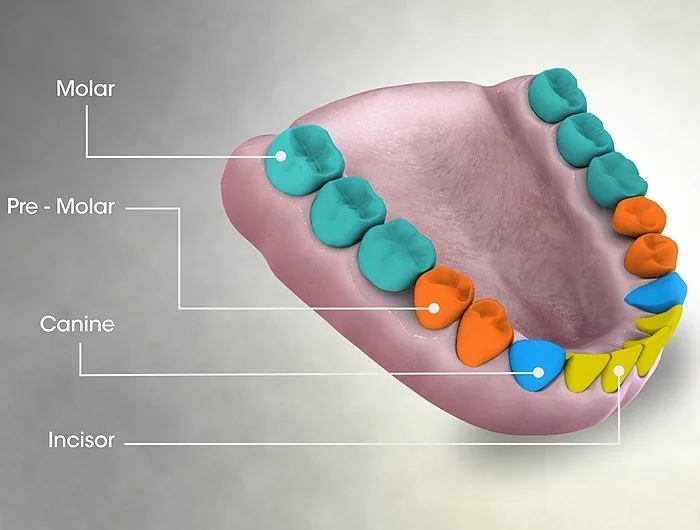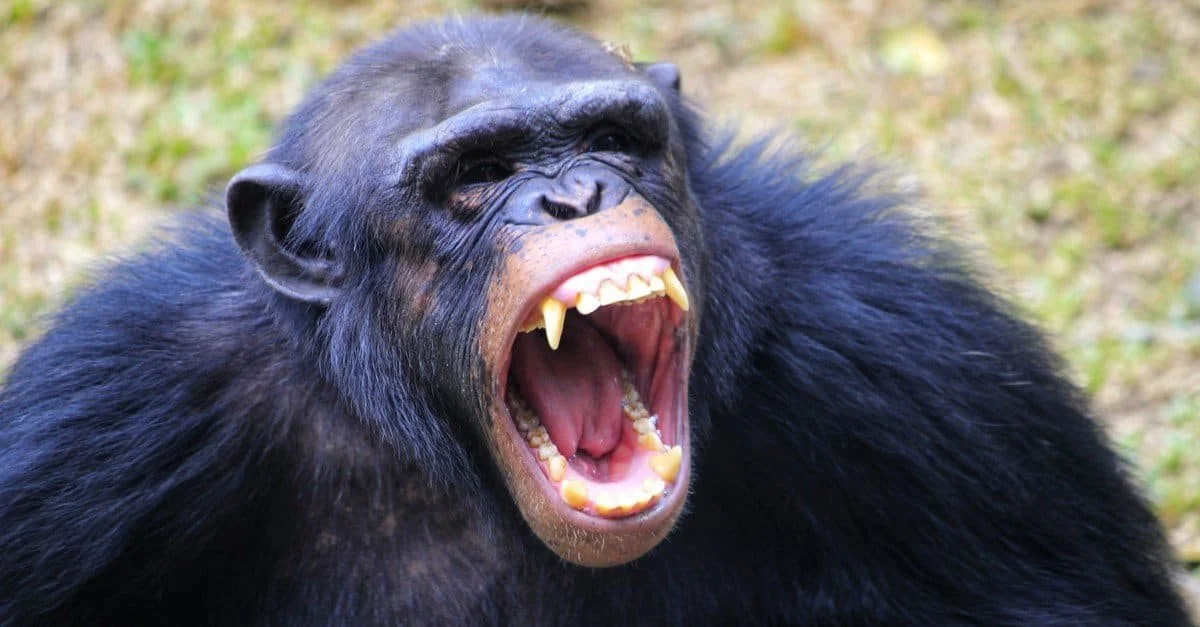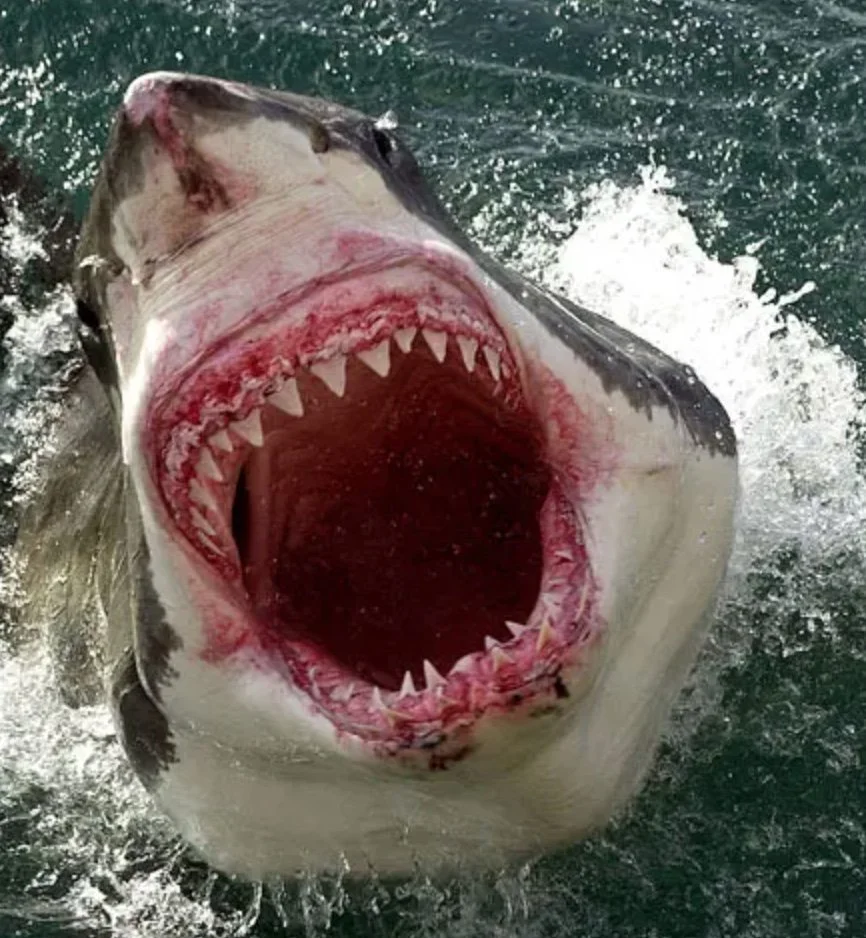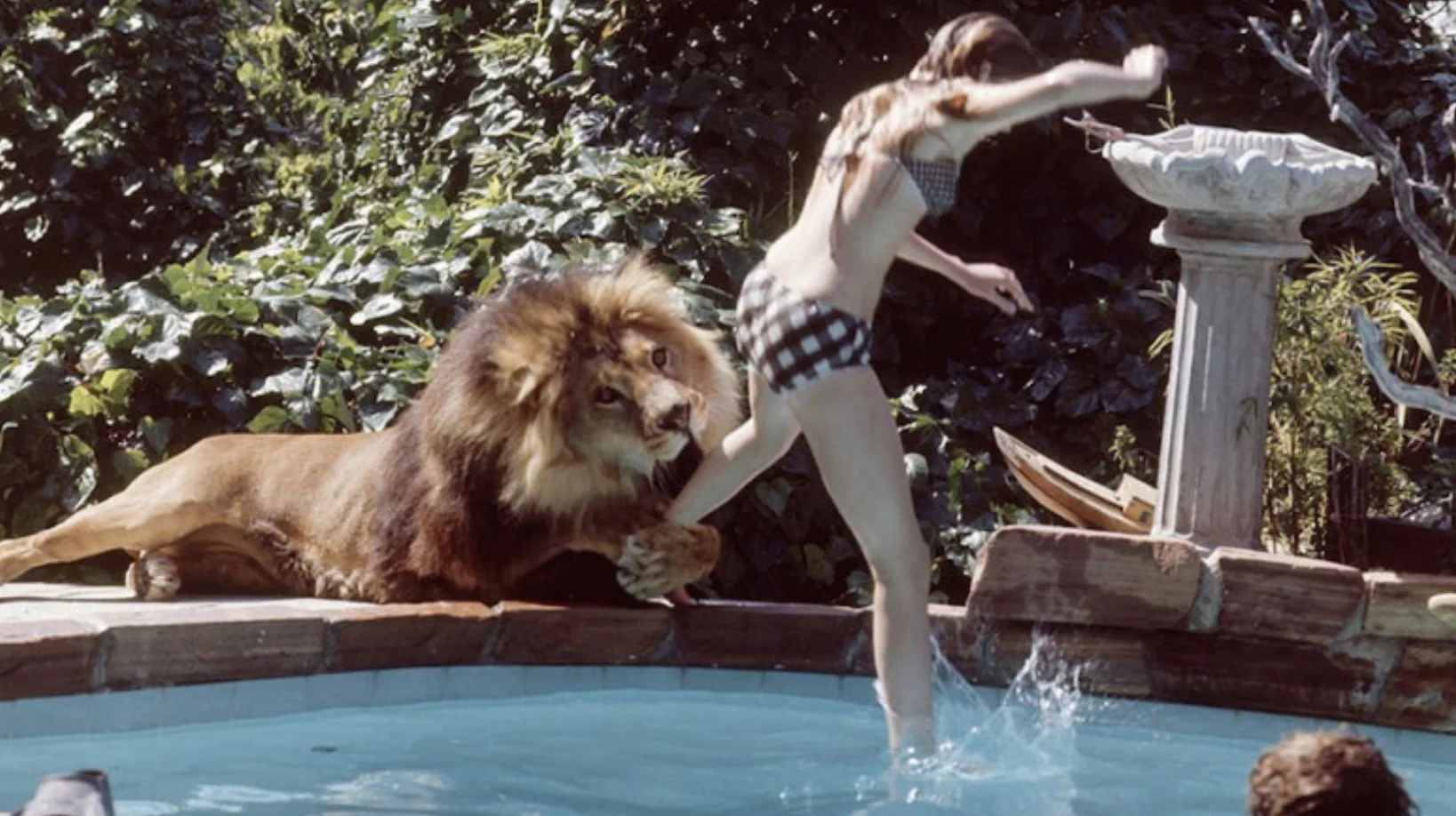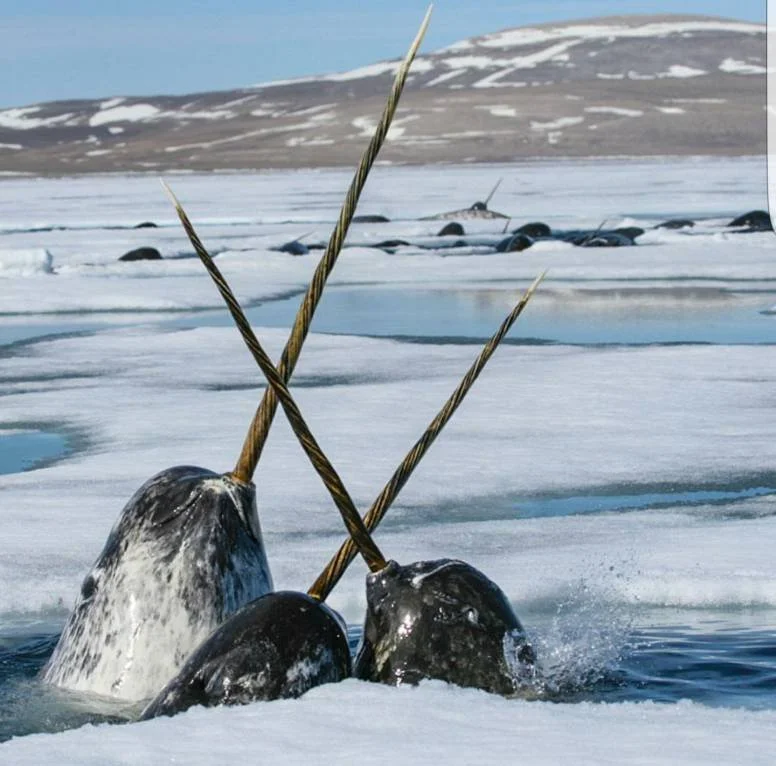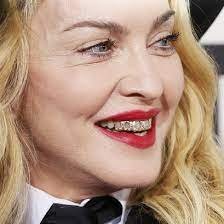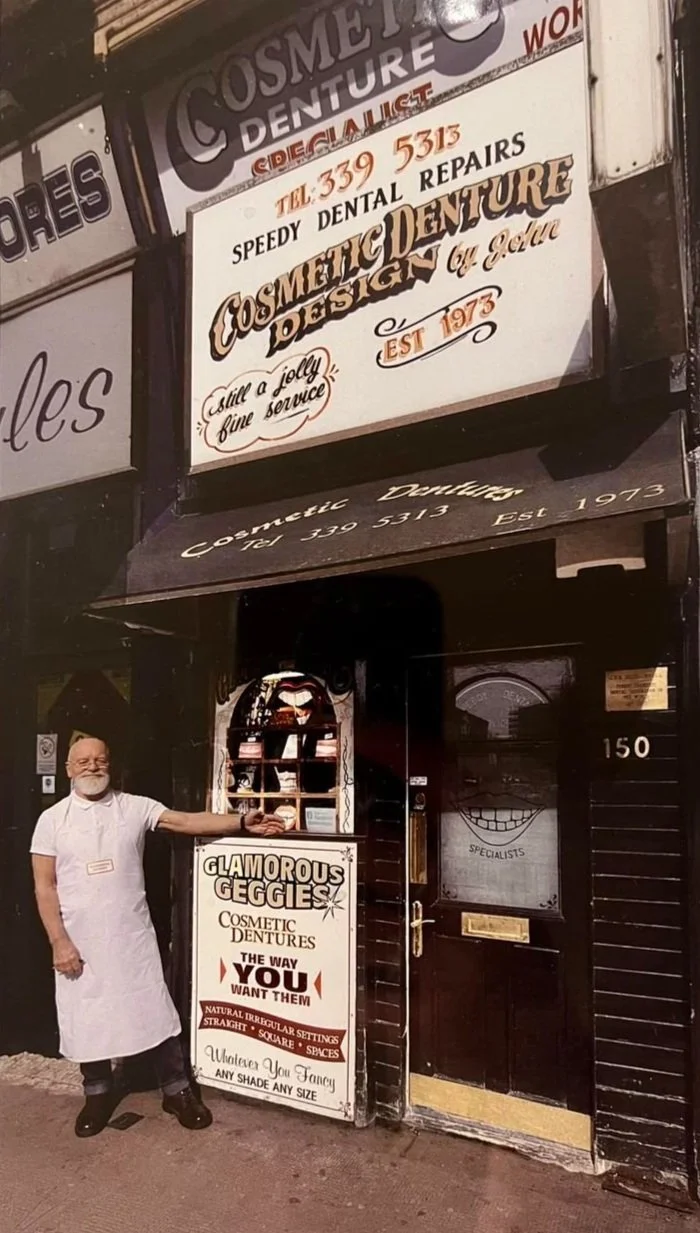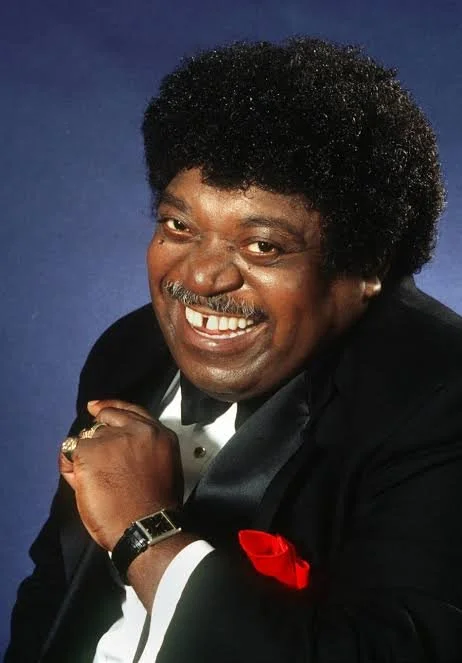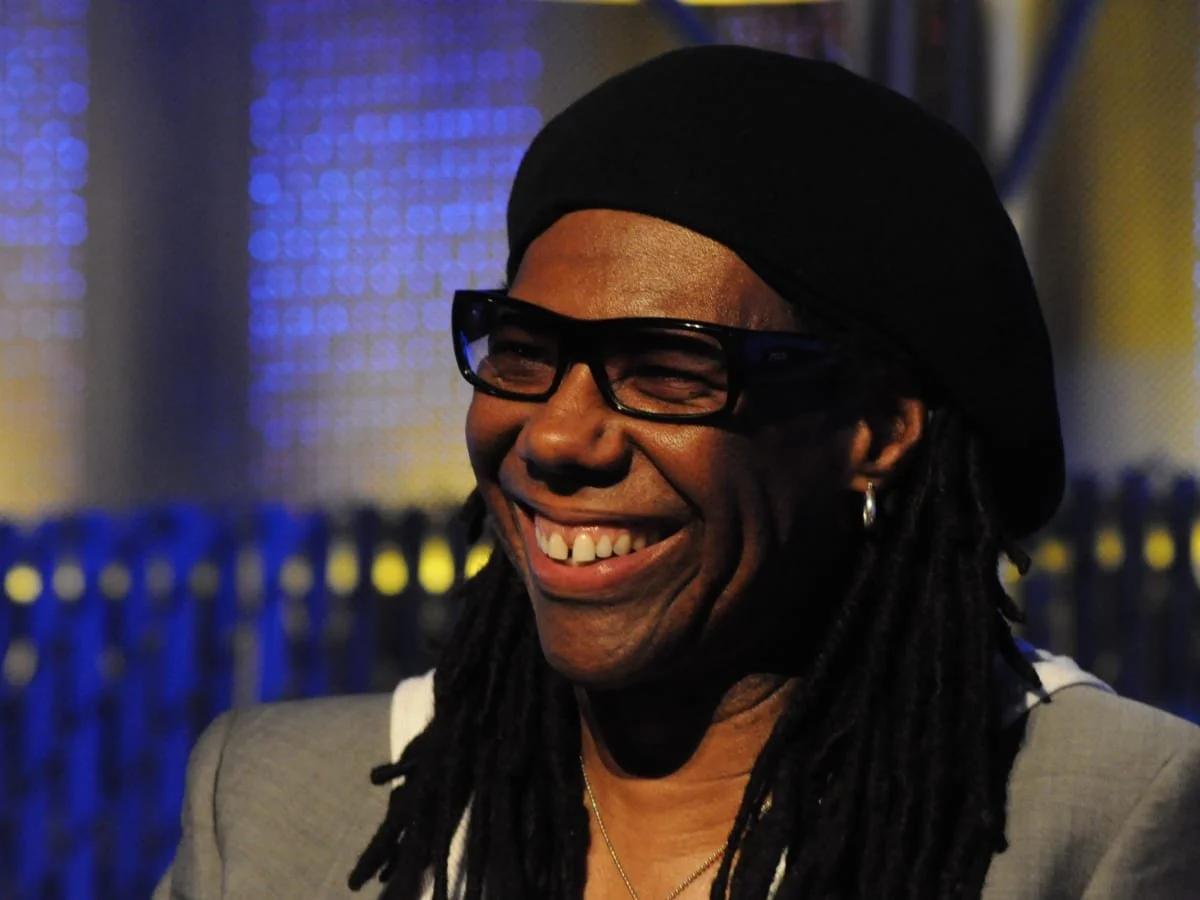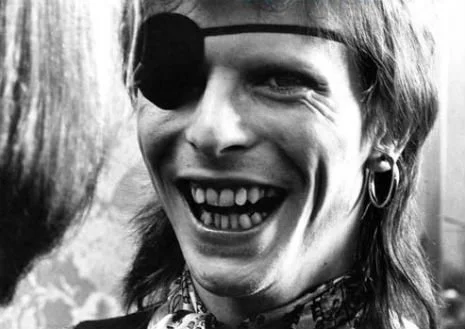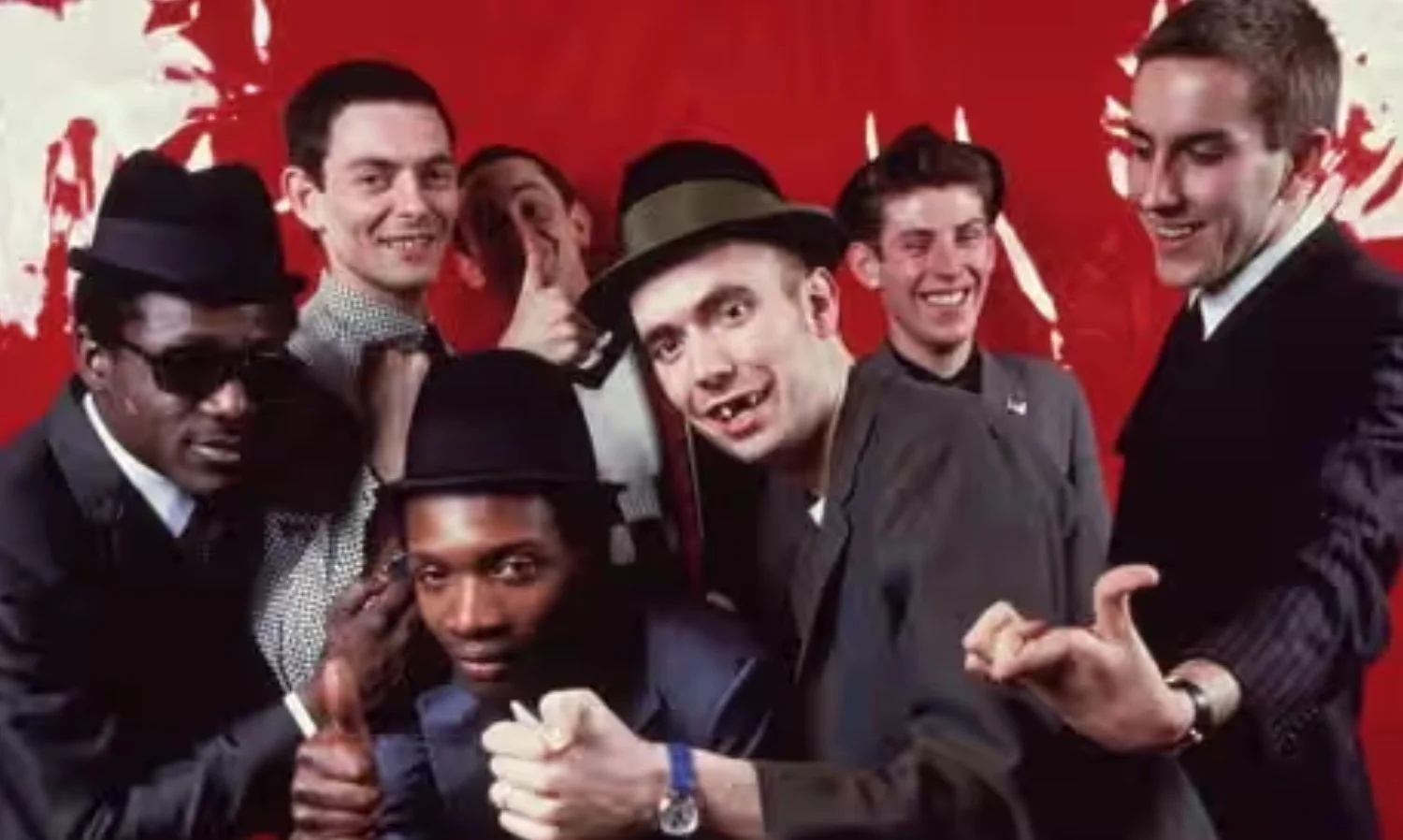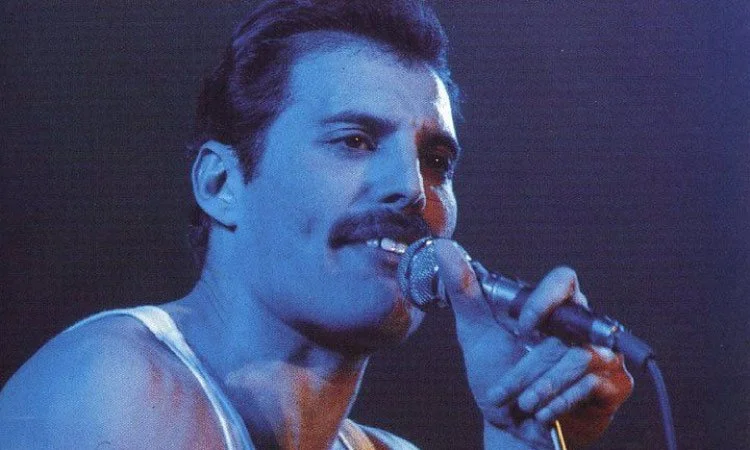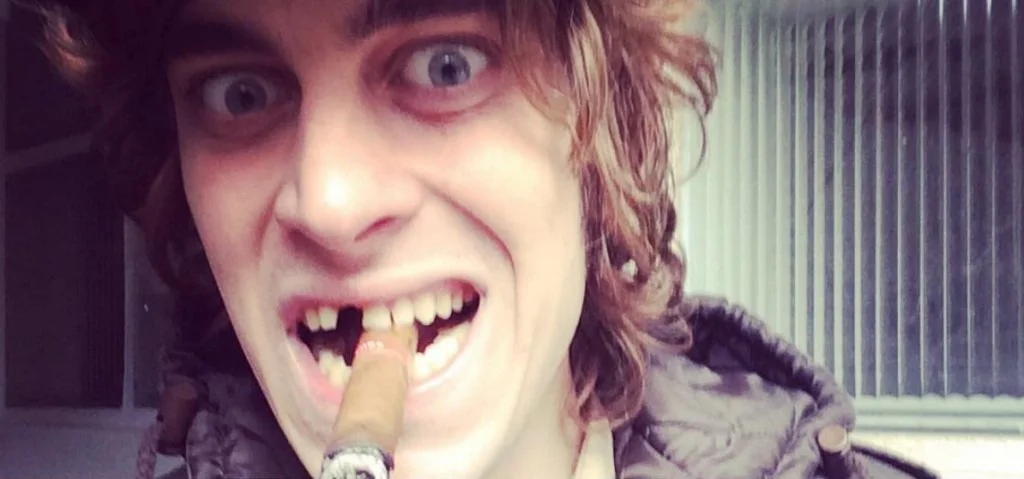By The Landlord
“When we, as humans, articulate, our tongues tend to hit the back of the teeth.” – Andy Serkis
“I’ve had all my teeth replaced with solid gold replicas of the originals.” – Genesis P-Orridge
“No performer should attempt to bite off red-hot iron unless he has a good set of teeth.” – Harry Houdini
“My wife had a bad habit of biting her nails, but I cured her. I hid her teeth.” – Tommy Cooper
As Halloween time looms again, it seems there's one element that's always present, and often heightened, on faces, on costumes, in stories, and classic characters and monsters. Whether that's Draculas or werewolves, the monsters of Alien, Chatterer in Hellraiser, the snappy Chucky, the rotting Leatherface, to the multi-bite Pennywise, that flesh-eating clown in IT – when teeth are pronounced or crooked, abnormal, bloody or gappy, they are extremely alarming. Conditioned as we are, we may want to see them, but only they are healthy, even, clean, uniform, normal, and therefore anonymous.
No laughing matterL Pennywise from IT
Even in pumpkins, when their absence in cutout holes create a presence. And yet oddly, while we aim to clean them regularly they are also something we take for granted, that is, until they are missing.
So this week it's time to celebrate these hard, calcified (they're not bone) structures covered in enamel and evolved from from scale-like ectoderm denticles – from molars to incisors and canines, mainly used for eating, but depending on animal and circumstance, fighting, carrying young or display. They can be the primary subject in lyrics or title, or used prominently as metaphor or idiom, from biting to brushing, gritting or grinding, chattering or tickling.
Teeth types the lower half of human set
Inside story
Teeth can mean many things – vitally useful, positive, friendly, but also hostile, and showing them can be confusing – human smiles carry all sorts of emotions and signals, from genuine and warm to the false and awkward. But don't do this to our chimpanzee cousins – baring your teeth is seen as threatening behaviour.
He’s not laughing either …
Monophyodont animals only ever grow one set, but most mammals, including humans, are diphyodonts, meaning that they develop two sets in their lifetime. We first grow a baby, milk or deciduous set, which starts to appear at about six months of age, although some babies are born with one or more neonatal teeth. We later grow a permanent (or indeed final) set of 32 in total, 16 on the maxilla and 16 in the mandible. The sometimes troubling rear molars are also known as wisdom teeth which are prone to eruption and decay.
But some animals are polyphyodonts, continually growing new sets, particularly fish and dolphins, and while sharks can do this as often as every two weeks.
Great white shark. No dental plan required
Crocodiles grow successional teeth in sockets every year, but as juveniles this might happen as often as once a month.
Of the mammal family, manatees, elephants and kangaroos are polyphyodonts. Most animals are armed with superior teeth to us. Rodents have upper and lower incisors that can continuously grow enamel throughout its life without having properly formed roots. Rabbit teeth grow continuously throughout life. Due to their high pH saliva, dogs' teeth, with their elongated canines, are far less likely to develop cavities.
Some pets' teeth take more than the biscuit. Hollywood icon Tippi Hedren loved to have big cats around the house. As she recalls: “I was studying my ‘Bold and Beautiful' script the other day, lying in a hammock, when one of my Siberian tigers walked up and grabbed it out of my hand - she wanted to play. See - teeth marks!”
One of Tippi Hedron’s pets playing with her daughter, then a young Melanie Griffith
But there are even bigger teeth than that of a tiger, such as elephant and walrus tusks, but nothing quite beats the narwhal's giant unicorn-like dental protrusion, which is a tooth containing millions of sensory pathways and used for sensing during feeding, navigation, and mating.
Narwhal tusks: the biggest tooth in the animal kingdom
But while there may be animal teeth getting a grip in some songs, many will come out in a human context. And they usually come up for many of us in the context of a trip to the dentist, something I try to avoid as much as possible. This experience is fortunately nothing like the tortuous scene between Nazi dentist Szell (Laurence Olivier) and Babe (Dustin Hoffman) in Marathan Man. It is definitely not safe!
Nor is it as entertainingly scary as Steve Martin's brilliant performance in The Little Shop of Horrors:
Due to a slow, creeping scandalous British government health policy brought in several decades ago, free dental care long ceased to be part of our culture, nor indeed, generally dental plans standard for workplaces. Therefore British teeth have something of a reputation, as shown in The Simpsons:
I grew up in a time when brushing teeth was encouraged, but also confectionery was easily obtained. It was tricky choice of course, but while that little rhyme on a plastic cup given out at school was temporarily appealing ...
Keep your happy smile
Shiny, clean and bright
Brush after breakfast
And last thing at night.
... the lure of a Curly-Whirly, Sherbet Dip or Mars Bar was far more so.
Like many, I had to endure the discomfort of a mouth brace to straighten teeth when I was around 11 years old. It wasn’t very big, and barely even visible, but I truly hated this alien object in my mouth. And so much so that when the day finally came for me to be able to discard it, I took it into my dad's tool shed, got out his big metal vice, and slowly and surely turned the handle and crushed it, then smashed it with a hammer on the ground until it was nothing but tiny bits of wire and plastic.
But wearing a brace can also be commonplace in glamorous circles. Here's Faye Dunaway on the contents of her famous smile: “You just sort of let them go for a while, but it was time to have something done to my teeth. I'm glad. It's going to be good. Tom Cruise has braces now, too. I'm right in style."
And even Madonna has recently been known to wear a brace, or grill as it's known in the States.
Horror week? Brace yourself: this is Madonna
Many famous people have scarily white, perfect teeth. They must have cost a fortune. However actor Gary Ross disapproves: "People who want to be a star get their teeth capped. People who want to be an actor get to work."
But personally I am dreading the time when I'll be forced into giving up a particular favourite prominent front tooth and, not having a spare £3,000 or more for an implant, might have to consider the denture route. Perhaps I should one day go back and visit Glamorous Geggie's Cosmetic Denture Specialist, that famous, tiny narrow shop in Partick, Glasgow.
Shut ya geggie - or open it? Glamorous Geggies wonderful denture repair shop in Partick, Glasgow
Maybe however, gappy teeth are cool. It hasn't done Kate Moss any harm, nor indeed the modelling career of Mick Jagger's daughter Georgia May, who reckons "I like the fact that I have good old-fashioned British teeth with a big gap."
Take some Mick and add in Jerry: Georgia May Jagger
And others, such as Percy Sledge and Nile Rodgers, have minded their gaps very well.
Gap band? Percy Sledge
Perfect intervals: Nile Rodgers
But to close, let's now have a brief celebration of other famous mouths, most of which own particularly prominent looks in the dental department:
Spaced oddities? Earlier Bowie
A strong bond? Richard Kiel as Jaws with Roger Moore
The Special one: Jerry Dammers
Mercury fillings?
Love is the drug: Fat White Family’s Saul Adamczewski
And of course … Shane McGowan’s famous chompers, before and after the big fix
So then, in humans or animals, smiles or snarls, literal or metaphorical or even idiomatic, it’s time to show your dental inspiration with songs mainly or at least prominently about these vital, hard calcified structures.
Fancy a bite of this topic? What gaps might you find to fill into a playlist? Will it be on purpose or acci-dental? Giving careful inspection to all your musical molars and more, is chief dental hygienist Nicko! Carefully mouth your nominations in the form of suggestions below, for deadline at 11pm on Monday for playlists published next week.
New to comment? It is quick and easy. You just need to login to Disqus once. All is explained in About/FAQs ...
Fancy a turn behind the pumps at The Song Bar? Care to choose a playlist from songs nominated and write something about it? Then feel free to contact The Song Bar here, or try the usual email address. Also please follow us social media: Song Bar Twitter, Song Bar Facebook. Song Bar YouTube, and Song Bar Instagram. Please subscribe, follow and share.
Song Bar is non-profit and is simply about sharing great music. We don’t do clickbait or advertisements. Please make any donation to help keep the Bar running:


